From the Grape: Salut!
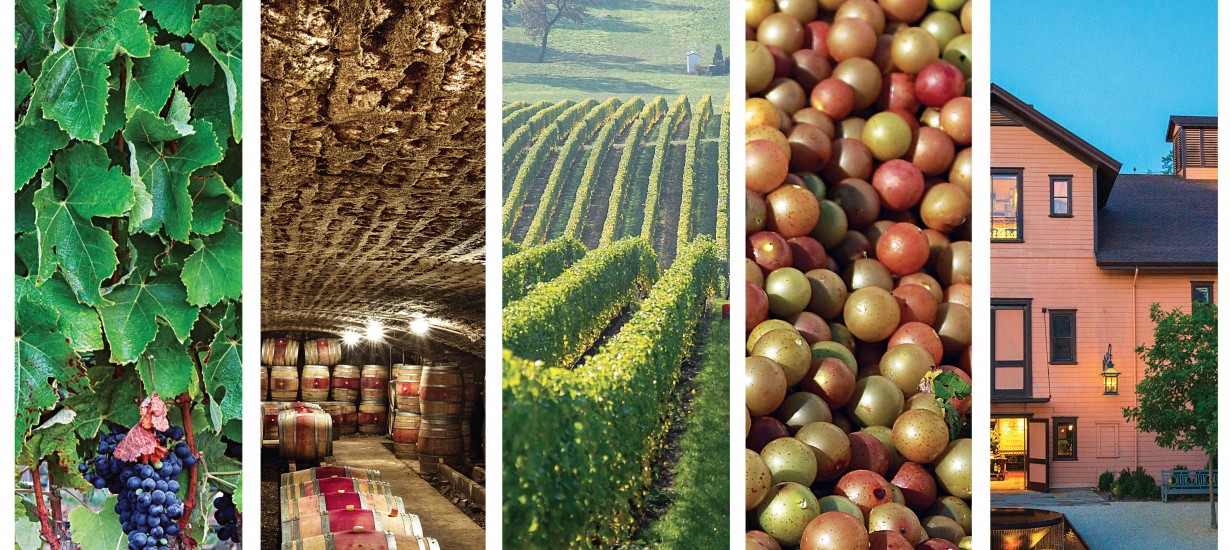
Chile, Burgundy, Willamette Valley, Napa, Duplin County. Alumni have adapted to different fruit, climates and customs to build successful wineries.
by Jill Warren Lucas
We crisscrossed the globe to learn about what it takes to grow the best grapes and transform them into great wine. It’s not easy. Variations in terroir yield fruit with significantly different attributes, and unkind weather can wreck an entire vintage. In searching for alumni who have mastered this art, we found five who produce wines as varied as a full-bodied French Burgundy to picnic-friendly sips made with Carolina muscadines. So get a glass and joins us.

Syrah grapes shortly before harvest at Kingston Family Vineyard in Chile’s Casablanca Valley. (Courtesy of Kingston Family Vineyards)
Kingston Family Vineyards
Andy Pflaum ’91
Chile
A week before leaving for a 2001 trip to Chile with a few Carolina classmates, Andy Pflaum ’91 met Courtney Kingston in San Francisco. It just so happened that she would be at her family’s Chilean farm at the same time, so she invited Pflaum and his friends to tour their new winery.

Andy Pflaum ’91 (Photo by Robert Germaine)
“Best vacation ever,” quips Pflaum, who married Courtney two years later. Today, he is general manager of Kingston Family Vineyards, where his wife is managing partner.
Chile’s Casablanca Valley, about 12 miles from the Pacific Ocean, beckoned his wife’s great-grandfather in 1906. Carl Johnson Kingston journeyed there from Michigan to mine copper and gold. Raising cattle on a 350-acre farm turned out to be a better bet.
It wasn’t until the late 1990s, when Courtney came to the U.S. for graduate school, that the idea of turning part of the farm into a vineyard took hold. Kingston boldly planted pinot noir and syrah vines in a cool, rugged region then known exclusively for white wines. They released their first wines in 2003, a small batch of just 400 cases.
“At the time, Chile was best known for jug wines sold in grocery stores,” says Pflaum, who hosted a GAA tour group in March, when Kingston’s harvest began. “But these wines were different. Overnight, our position in the industry was boosted. It showed that we could grow grapes that could compete with top California wines, but which were much less expensive to produce.”
Kingston wines continue to earn high marks for their value. Wine Enthusiast magazine praised a 2013 sauvignon blanc, noting it “overdelivers on its price by a factor of two or three times.” Kingston also grows grapes for other wineries, including Concha y Toro, one of Chile’s largest producers.
With the 2015 harvest pressed and fermenting in barrels, Pflaum feels good about the future. “We’re still a small producer, but we have a loyal customer base,” he said. “About 90 percent of our wine goes straight to the homes of U.S. buyers.”
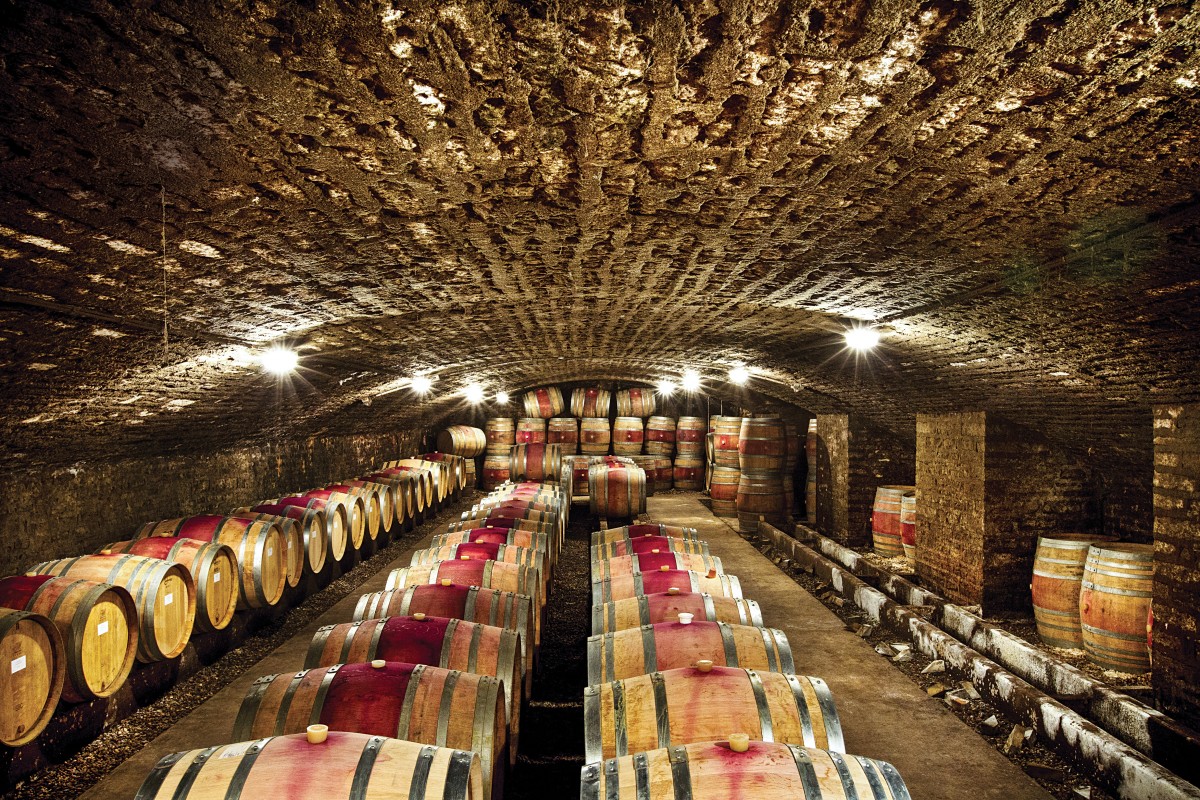
These wine caves probably were built in the late 1790s to early 1800s. The vaults are lined with limestone blocks that are held in place by a rough limestone mortar. Pictured here is the section holding red Burgundies and pinot noirs. Gambal’s white Burgundies and chardonnays can be found in an identical hall at a right angle to this one. Each hall is a mirror image of the other. (Courtesy of Maison Alex Gambal)
Maison Alex Gambal
Alex Gambal ’79
Burgundy
Alex Gambal ’79 is making his mark as an American in Burgundy.
“There are a lot of great farmers and great winemakers in this part of France, but not many do both,” says Gambal, a grower-producer who releases about 50,000 bottles a year. “It’s not easy to get started, especially as an outsider. But after 17 years, people trust the quality of what we’re doing.”
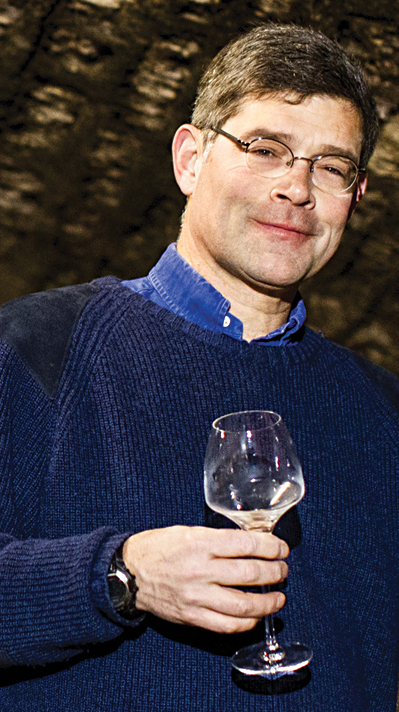
Alex Gambal ’79 (Courtesy of Maison Alex Gambal)
Gambal came to Burgundy in 1993 with his wife and children for what they thought would be a short stay. After training as an export broker, he launched Maison Alex Gambal in 1997.
Credibility is as essential as great grapes in the competitive world of high-end French wine. In 2011, Gambal became the first non-Frenchman to purchase plots of established Montrachet vines in the highly desirable Côte de Beaune subregion of Burgundy. Today, he owns about 30 acres of prime vineyards and is eager to expand.
“There are very few people in Burgundy with large parcels,” Gambal said, explaining that his 36 small parcels were divided by decree in the Napoleonic era. “It’s very much like small-town Southern farming. You’ve got to know the lawyers, the bankers, the accountants. You hear one day that someone’s lease is coming up, and you try to jump in. You have to be very proactive.”
While parcels are located in manageable proximity, many possess distinctly different terroir that gives the varietals a sense of place easily recognized by wine aficionados. Gambal produces about 20 wines, including one bottled in March from just two barrels. Inherent variables, including unseasonable weather in recent years, makes growing the region’s world-renowned crop a costly and risky venture.
“For producers anywhere else in the world, it’s hard to wrap your head around, but I love it,” Gambal said. “It’s complex and interesting and all very typical here.”
For more about Gambal, see “Harvesting Time in a Bottle” in the January/February 2009 Review.
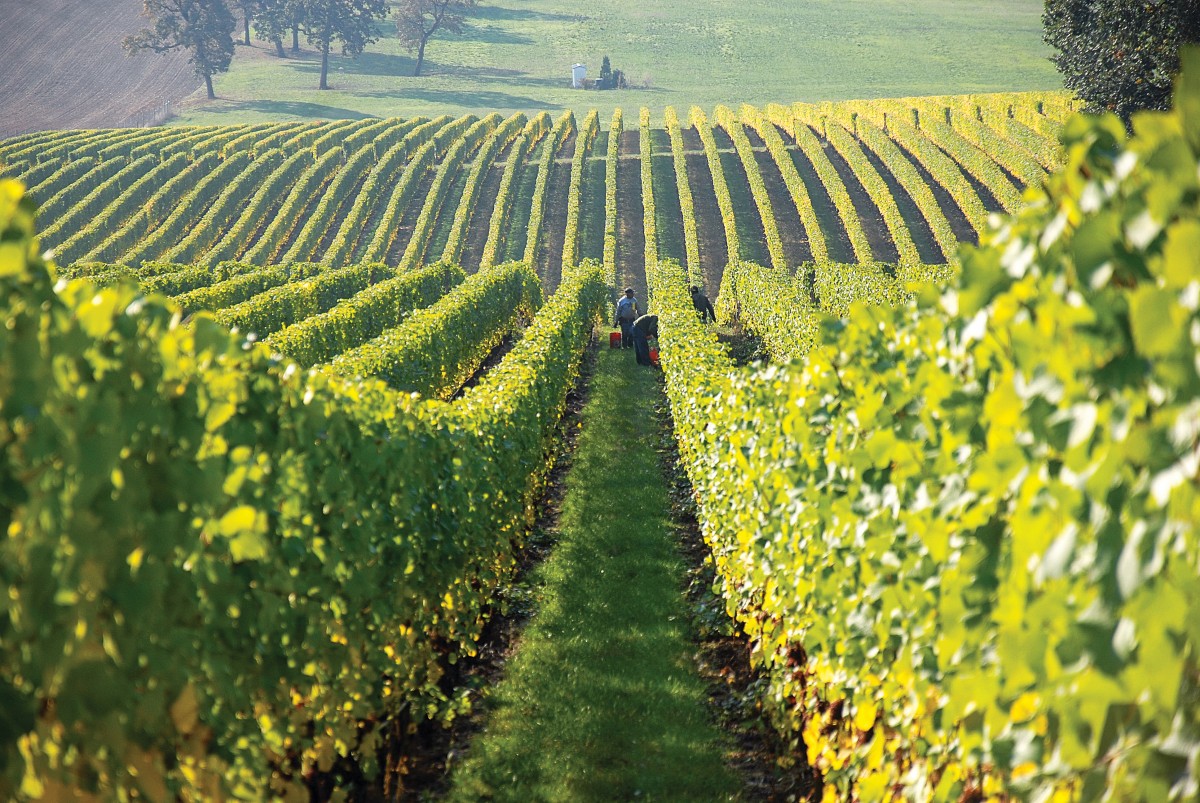
Oregon harvest at a Chehalem vineyard, looking south down a row of Pinot gris. (Courtesy of Chehalem Wines)
Chehalem Wines
Harry Peterson-Nedry ’69
Willamette Valley
More than 40 years ago, Harry Peterson-Nedry ’69 traded the humid eastern North Carolina of his youth for the cool, misty clime of Oregon’s Willamette Valley. California’s Napa Valley already was crowded, and the burgeoning winemaker was looking for an untapped resource.
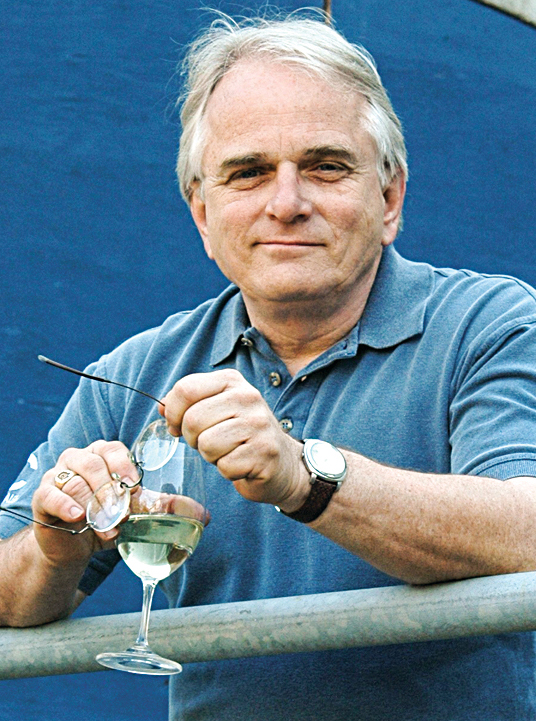
Harry Peterson-Nedry ’69 (Courtesy of Chehalem Wines)
“There was practically no one here at the time,” said Peterson-Nedry, who established Chehalem Wines in 1980. He was attracted to the region for its three distinct soil types: volcanic, ocean sedimentary and glacial silt, each of which delivers a unique flavor profile. Last year’s bountiful crop produced 25,000 cases, mostly crisp whites but also full-bodied pinot noirs, with the Ridgecrest, Stoller and Corral Creek estate labels.
Peterson-Nedry applies his chemistry degree to the many aspects of production technology, starting with environmentally sustainable practices in his fields. He jokes that they switched to lighter bottles and recyclable shipping materials to both “reduce our carbon footprint and prevent hernias.” They also ditched corks in favor of screw tops, defying a perception of cheapness with facts of reduced contamination and better preservation.
All wine processing is managed onsite by his daughter, Wynne. The first step is resting just-picked grapes overnight in a chilling room, followed by meticulously controlling temperature throughout fermentation. “Everyone has a slightly different process, but as a chemist I boil it all down to technical reasons,” he said. “We pull every last bit of flavor and aroma, starting at the beginning and not the end.”
Such attention to detail shows that while you can take the boy out of North Carolina, you can’t strip the state’s motto from his mind. Esse quam videri — to be, rather than to seem — is prominent in his company’s core principles.
“In winemaking, there is a real need to being genuine. If you’re not, people will know with the first sip,” he said. “This is a family operation, and we have a crew that has been with us for 28 years. We’re all faithful to one and another, and we set the bar a little higher each year.”
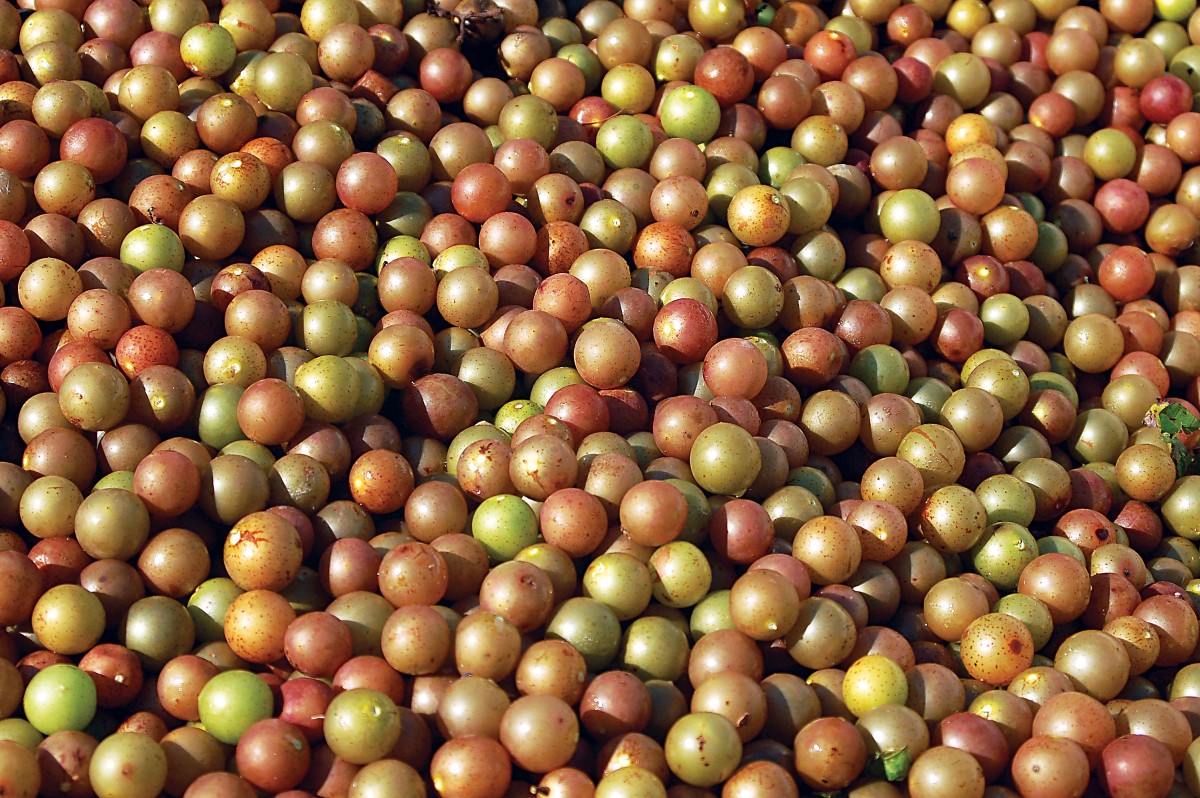
Like other winemakers, Jonathan Fussell ’98 is convinced of the importance of terroir, which yields juicy muscadines with flavor-packed skin. (Courtesy of Duplin Winery)
Duplin Winery
Jonathan Fussell ’98
Duplin County
Jonathan Fussell’s father never intended to become the world’s largest producer of muscadine wines.
“My father was a lay minister, and he did not want to open up a winery at all,” says Fussell ’98. “He and my uncle were selling grapes to another winery when the price bottomed out in 1974. They weren’t going to get the return they needed making jam or jelly. The simple fact is, they needed to do something with their investment.”
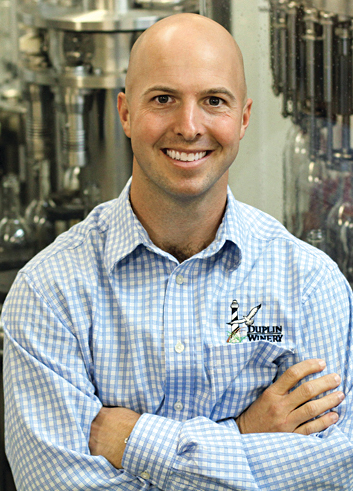
Jonathan Fussell ’98 (Photo by Mary Lide Parker ’11)
Incentivized by the tax-free status of North Carolina-made wine, Duplin Winery opened in 1976. Like other winemakers, Fussell is convinced of the importance of terroir, which yields juicy muscadines with flavor-packed skin. He is unapologetic about the sweet wines that result.
“It’s a lot like iced tea,” he explains. “When folks order tea in the South, it comes sweet. Our wines do, too, and that’s the way our customers like it.”
To retain peak flavor, muscadines ferment and rest in steel tanks instead of wood barrels. “We learned that back in the ’70s, and it’s how we still do it today,” Fussell said. “We use a lot more of the grape now than when I was at Carolina. We’ve gone from using about 52 percent of the weight of the grape, which is the juice, to 94 percent.”
The difference is that Duplin no longer struggles to dispose of the antioxidant-rich skins and seeds, which it sells to foreign buyers.
Duplin’s success this year allowed it to expand its operations outside of North Carolina. A new 15,000-square-foot bottling facility and tasting room in Myrtle Beach, S.C., marked its grand opening on June 6. Wines bottled there are blended to include at least 60 percent South Carolina-grown grapes, as required by law.
“We’ll also be introducing two new products everywhere, red and white sangrias, which are perfect for summer,” Fussell said. “Muscadines are especially well-suited to this, and people have been asking for it for a long time.”

Trefethen’s historic winery building (c. 1886) housed the winery’s tasting room until a 6.0 earthquake rocked Napa Valley in August 2014. The building’s second floor shifted almost 4 feet to the west. The tasting room has moved to a temporary location. A team of engineers and architects are working to restore the building. (Courtesy of Trefethen Family Vineyards)
Trefethen Family Vineyard
John Trefethen ’66
Napa Valley
The challenge of picking a wine to drink can seem overwhelming. If you find your head spinning in a well-stocked shop, John Trefethen ’66 has some calming advice.
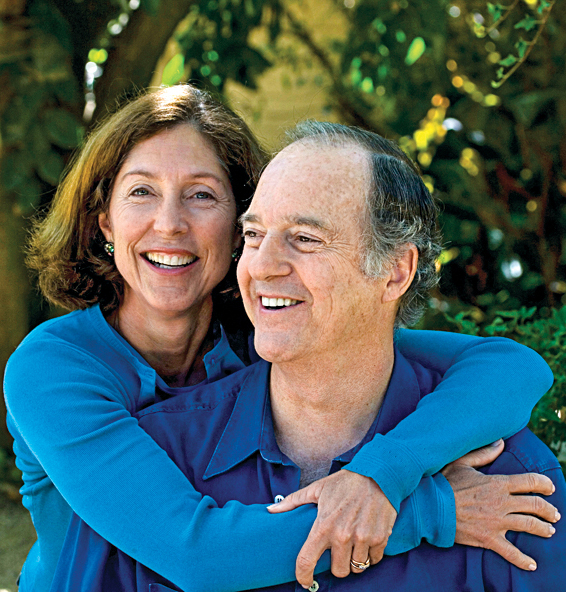
John Trefethen ’66 and Janet Trefethen (Courtesy of Trefethen Family Vineyards)
“Vintners have been modifying wines in recent years to make them more accessible,” said Trefethen, who has been producing award-winning Napa Valley wines under the Trefethen Vineyards label since 1973. These include four signature and five reserve wines annually as well as a handful of small-lot specialties. “As a result, you’re more likely to pick a good wine than not.”
In the 1970s and ’80s, when Napa was first making its mark, wines from the region tended to mimic Old World vintages with big fruit flavor and a high alcohol content. Today, thanks to both sustainable farming and improved technology for processing, wines bear a distinct California taste that U.S. consumers find appealing.
Trefethen says part of the equation is the grapes’ lower sugar content, which yields a lower alcohol wine. “As we became more sophisticated, we made more elegant wines that maybe weren’t as dark in color or intense in flavor, but they had marvelous balanced flavors and aromas that blend beautifully with food,” he said. “And they age well, which also is important.”
While his wines earn high ratings from critics, Trefethen says most buyers should ignore ratings and learn to trust their senses. Seek out sellers with knowledgeable staff that offer tastings or classes. Inspect the wine’s color in a compatible glass and deeply inhale its aroma before taking a sip. Do the aromas click with flavors you like or spark a forgotten memory? Or do they have an off-putting whiff of gravel and gym socks?
“It’s so important to smell the wine first,” Trefethen said. “Sometimes you get notes of something unusual, but in a good way, like a smoky undertone that reminds you of camping in a beautiful place. I use a lot of adjectives to define taste, but really it’s all about how it connects with an individual’s experiences.”
Thanks for reading the Carolina Alumni Review
Carolina Alumni members, sign in to continue reading.
Not yet a member? Become one today.
